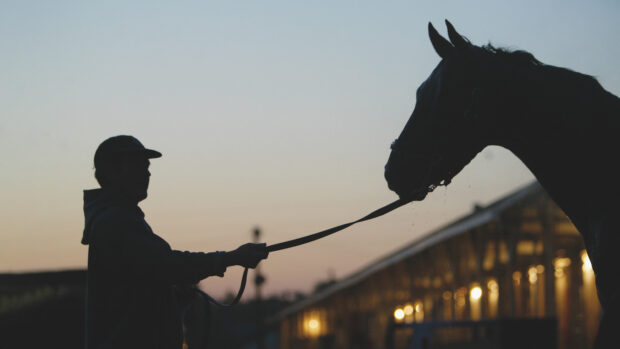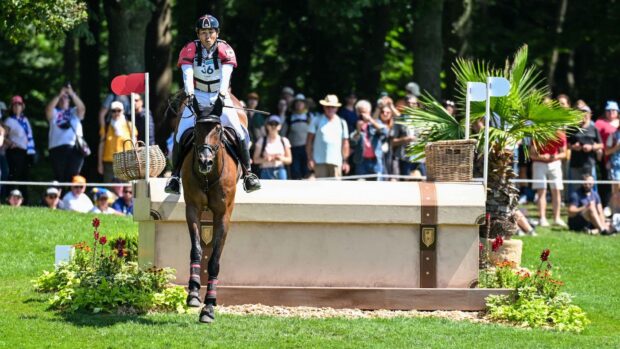The surgeon who led the extremely rare procedure to replace a dislocated equine shoulder hopes to get the message out that this is possible, adding: “It’s so good when you can make such a difference.”
Cheryl Bell’s 15.3hh Irish sport horse/Connemara mare Willow could hardly bear weight on her left foreleg, after, it is thought, she landed badly having jumped out of her field. But after her operation, she towed Andy Fiske-Jackson, associate professor of equine surgery and deputy head of Royal Veterinary College (RVC) equine, back to her stable with barely a limp.
“It’s nice to be able to make such a difference to a horse in such a short space of time,” Mr Fiske-Jackson told H&H.
Mr Fiske-Jackson said miniatures and Shetlands are more likely to suffer such an injury than full-size horses, for whom it is “incredibly uncommon”, and “even less commonly attempted to fix”. He said there have been a few cases, in the US, or one of an Icelandic horse whose shoulder popped out immediately after surgery, so was anaesthetised straight away to put it back in.
“But this was two days down the road, and a big horse,” he said. “Beforehand, I told the owner it was very unlikely to work and there was no precedent, no evidence to draw on.”
Mr Fiske-Jackson consulted colleagues internationally, none of whom had carried out the procedure.
“It was either ‘Try it but it probably won’t work’ or ‘You should probably euthanise as it won’t work’,” he said. “Apart from the difficulty in replacing it, there’s often collateral damage to the joint itself – something has to be injured for the shoulder to pop out – which renders the prognosis much poorer.”
But X-rays revealed no bony abnormalities so Willow was anaesthetised, and a sling readied should she need its support.
“There was an audible pop and a jolt as it went back in,” Mr Fiske-Jackson said. “When she got up, it was in a very sensible way, and she was incredibly more comfortable. It was the middle of the night and she was practically dragging me back to her stable; from her not being able to walk, I could hardly hold her. It was surreal; amazing, but worrying!”
The main fear was that the ease with which the joint went back in meant it could pop back out, but Mr Fiske-Jackson paid tribute to Willow’s calmness after anaesthesia, which undoubtedly helped. After a day or two she went home, for box rest and physio exercises. Mr Fiske-Jackson said there was muscle damage in the area and there may be cartilage injury, but this should heal.
“It’s a really good result,” he said. “I wasn’t even supposed to be on call that night but I’m glad I was there. One of those once-in-a-lifetime cases, and it’s important as if it happens to another horse, there will now be realisation that it’s worth trying.”
Cheryl told H&H she found Willow on three legs; although she had never jumped out of her field before, Cheryl thinks she must have gone over a double fence and landed awkwardly.
“She was dragging her leg like it was broken,” she said. “When the vet X-rayed and told me it was dislocated, they said it wasn’t something they’d ever done before.
“No one knew whether it would stay in; I thought I would have to have her put to sleep; the vets said it wouldn’t be the wrong thing to do, but they said they’d give it a go. I cried when I got the call afterwards.”
Cheryl said she knows it is a long road, and even if Willow cannot go back to the jumping and pleasure rides they have done together, she is happy just to have her still.
“It means everything,” she said.
- To stay up to date with all the breaking news throughout Horse of the Year Show, London International and more, subscribe to the Horse & Hound website
You may also be interested in:

Towel in a bowel: tiny filly undergoes surgery to remove unsuitable snack

The shoulder joint in horses
This unique and complex joint rarely goes wrong, yet diagnosing and treating any problems that do arise can be challenging.

Subscribe to Horse & Hound magazine today – and enjoy unlimited website access all year round





